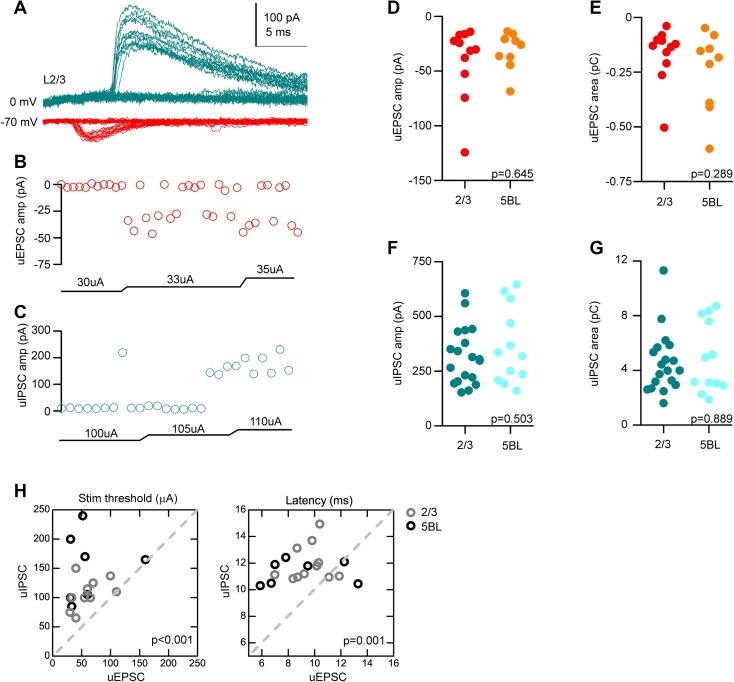Fig. 2.
Properties of unitary EPSCs and IPSCs in L2/3 and L5BL pyramidal neurons. a Example of a putative unitary EPSC (red) and IPSC (blue) recorded in a L2/3 pyramidal neuron in response to a minimal stimulation protocol. Notice the abundant presence of failures and the longer latency of the unitary IPSC. b, c Peak amplitude and stimulus intensity employed for the unitary EPSCs (b) and IPSCs (c) shown in a. Notice that uEPSCs had a lower stimulation threshold than uIPSCs. d, e Peak amplitude and area of the uEPSCs recorded in a sample of L2/3 and L5BL pyramidal neurons (n = 11 and 9, respectively). f, g Same as d, e for uIPSCs (n = 19 and 12, respectively). No significant differences were found in the amplitude and area of uEPSCs and uIPSCs across L2/3 and L5BL pyramidal neurons. h Stimulus intensity (left panel) and latency (right panel) of unitary IPSCs vs EPSCs. Only neurons in which both responses were recorded were considered (n = 11 L2/3 and 7 L5BL pyramidal neurons, gray and black circles, respectively). Notice that, as expected, uIPSCs require a higher stimulation threshold and appear at longer latencies than uEPSCs

